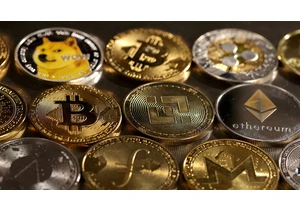At a university campus in Rolla, Missouri (population 22,000), a small team of scientists is developing a glass powder that, when applied to wounds, significantly improves blood clotting and reduces risk of infection. In addition to saving lives, the technology has the industry excited for its commercial potential.
The Midwest university behind the research is not one you typically see on the front pages of news sites: it’s the Missouri University of Science and Technology, a land-grant university founded in 1870 to support the state’s mining industry. Located about 100 miles northeast of St. Louis, Missouri S&T is an Emerging Research Institution, a designation in the “CHIPS and Science Act” for less-resourced universities that nevertheless are home to a growing number of outstanding scientists and engineers producing important research.
Yet, the more than 2,000 Emerging Research Institutions, which represent approximately 95% of U.S. universities engaged in research, receive just around 10% of all research funding from the corporate sector.
This matters because private industry is critical for translating research from the lab to the market and society. With more support from industry, ideas born in these lesser-known but highly capable institutions will have a far greater chance of benefiting our economy, human health, and the planet.
Unfortunately, this is more complicated than it sounds. Emerging Research Institutions often lack the resources to staff tech transfer, industry relations, and marketing teams that are responsible for building relationships with industry, advocating for their faculty and promoting their expertise.
That makes it nearly impossible for companies to know which among these thousands of universities would make the best partners based on their research specialties. It’s simply not practical to actively scout from and build relationships with every university. Instead, companies generally rely on conferences, consultants, existing relationships, and pure serendipity. As a result, they miss a large amount of research happening in the world, particularly at Emerging Research Institutions.
However, thanks to advancements in artificial intelligence and machine learning, companies no longer need to make this sacrifice. By leveraging the millions of publicly available data points from publications, grants, patents, and company databases (along with the relationships among scientists and engineers), it is possible to predict which researchers are most likely to have a solution to an industry problem. This creates more opportunities to programmatically uncover unexpected applications for early-stage technologies.
As a step toward achieving a more democratized approach to research, the U.S. National Science Foundation is investing in a number of projects to stimulate more diverse partnerships between academia and industry through programs like ART, EPSCoR, and GOALI. Emerge is one example of an NSF-supported pilot project that is being conducted by Halo, where I work as CEO. Emerge will leverage Halo’s network and AI-based matchmaking technology, as well as user behavior on the platform to connect industry with researchers best aligned with their needs.
By transitioning from a manual approach to academic-industry partnering to one that is AI-driven, companies can access the full breadth of innovation happening across our nation’s research institutions. This will enable companies to take a more diversified, portfolio-based approach to funding scientific research that broadens their pool of partners, increases overall chances for success, and moves science forward for all of us.
Zaloguj się, aby dodać komentarz
Inne posty w tej grupie

Riddle me this: What exactly is Trello?
Despite counting myself as a heavy-duty power user of the product for well over a decade now, it’s a question I’ve long struggled to answer. Techn

The trope of the starving, broke artist has long maintained a place in the public imagination, even as it has morphed into idealized notions of “‘hustle” or “grindset.” “It’s cool to romanticize [

When Apple first introduced MagSafe for the iPhone in 2020, I did not fully appreciate it.
iPhones had supported wireless charging for a few years at that point—and Android phones starte

Even if you’re a regular Alexa user, there’s a good chance you haven’t discovered some of its most efficient features.
Actually, strike that: There’s a good chance you’

The Fast Company Impact Council is a private membership community of influential leaders, experts, executives, and entrepreneurs who share their insights with our audience. Members pay annual

Cryptocurrency exchange Bybit said last week hackers had stolen digital tokens worth around $1.5 billion, in what researchers called the biggest crypto heist of all time.
Bybit CEO Ben Z

